Business
Economic woes dominate as Bolivia prepares to go to the polls
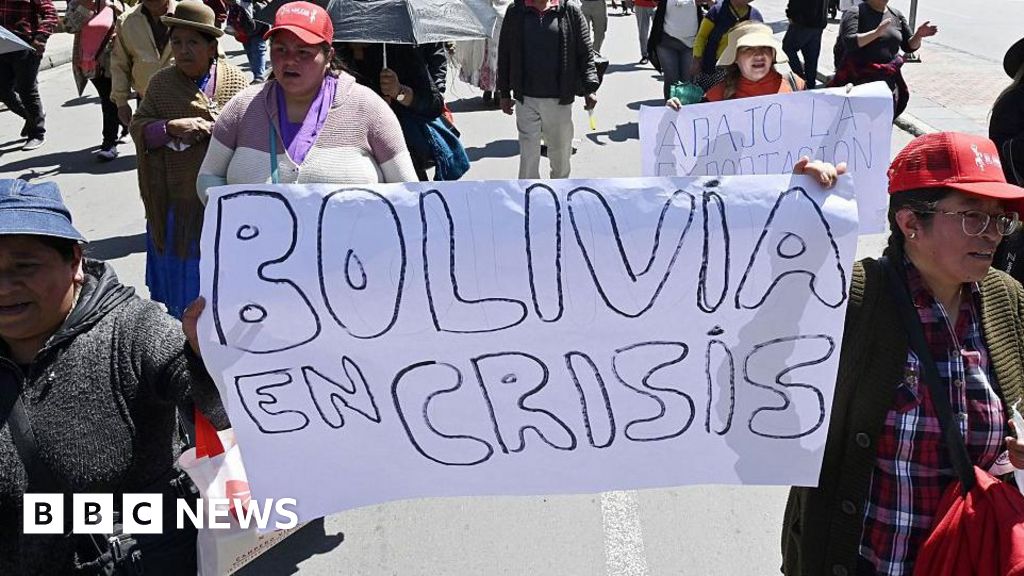
Business reporter
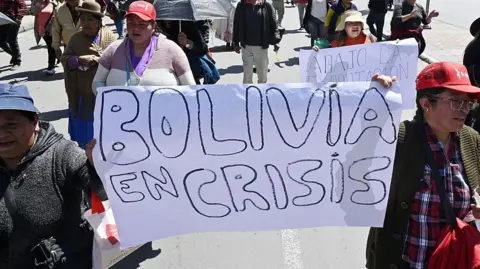 Getty Images
Getty ImagesAs Bolivians prepare to vote in a general election, the country’s deep economic woes are the central issue. Whoever becomes the nation’s next president faces a very difficult job to try to sort out the mess.
El Alto is Bolivia’s second-largest city, home to 1.2 million people. And, at an elevation of 4,150m (13,615ft), it is the world’s highest city with a population of more than 100,000.
It’s full of narrow streets with vendors trying to sell you everything from oranges to knock-off designer trainers. Standing on a pavement, car mechanic Josue Macias is enjoying an ice cream with his young son.
He describes how Bolivia’s sky-high inflation is affecting him and his family. The annual rate soared to 24% in June.
“Prices for everything are going up, but we are still earning the same,” he says. “We are just about getting by, but it’s hard because food prices are rising all the time, things like meat, oil and eggs. They are double or triple what they used to be.
“We’ve had to tighten our belts. We don’t go out to eat in restaurants anymore. Instead, I’m here on the street having an ice-cream with my son!”
Bolivia’s inflation spike has been caused by a combination of factors. Falling natural gas production and therefore exports of this key foreign earner has led to a decline in overseas revenues.
In turn, this has meant a shortage of US dollars, making it harder and more costly for the country to import petrol, diesel and food stuffs, leading to shortages and price hikes. It has led to street protests across the country.
At some petrol stations across the country, lorry drivers often have to wait more than 24 hours to fill up.
Taxi driver Gonzalo Ris is frustrated. As we drive along the pot-holed streets of La Paz, the country’s administrative capital, he tells me about his struggles.
“Before it was easy to fill up with petrol. Now I must wait for around four to six hours at the gas pump to get some, and that’s too much. It’s such a waste of time.
“And the prices are so expensive,” he adds. “Now the money we earn doesn’t cover our costs. But we can’t put our fares up because if we do, we won’t have any customers. It would be too expensive for them.”
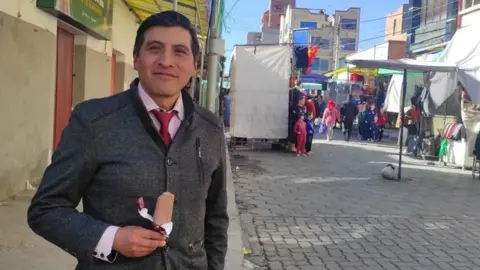
For almost 20 years the Bolivian government kept fuel prices artificially low through subsidies. This started when the government of then President Evo Morales nationalised the country’s hydrocarbon sector in 2006.
But in 2023, state energy company YPFB said Bolivia was running out of domestically-produced natural gas, due to a lack of investment in new exploration.
Without this gas to export, the Bolivian government is struggling to continue to find the funds to subsidise petrol and diesel. Last year it spent $2bn (£1.5bn) on such subsidies, according to a recent statement by a former minister of hydrocarbons and energy.
Outgoing left-wing President Luis Arce, who is not seeking re-election on 17 August, blamed the Bolivian parliament for the fall in natural gas production, accusing MPs of blocking vital oversea loans. His opponents in turn blame him for the economic turmoil.
The official exchange rate of Bolivia’s currency, the bolivianos, is certainly not helping matters. Since 2011 the government has fixed the exchange rate at 6.96 bolivianos to one US dollar.
But unofficially you can get 14 to 15 bolivianos per dollar. This has led to a thriving black market, especially of exports, from which the government misses out on tax revenue.
Economist Gary Rodriguez, the general manager for the Bolivian Institute of Foreign Trade, explains: “A product that costs seven bolivianos here in Bolivia can be sold for 15 bolivianos abroad,” he says.
“The problem is that businesses would prefer to sell items on the [overseas] black market rather than here in Bolivia which leads to food and fuel shortages.”
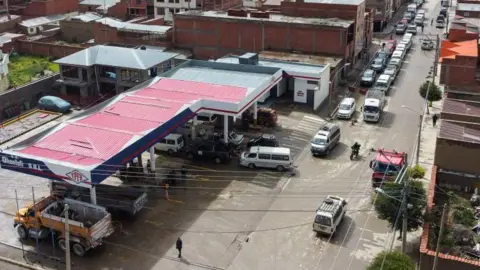 Getty Images
Getty ImagesRestrictions on the use of credit cards is another headache for Bolivia’s business community.
“The problem with the credit cards is that all the banks have limits that are ridiculous,” says Alessandra Guglielmi, who owns a food business called The Clean Spot.
“You can [only] spend around $35 a month over the internet with online purchases. $35 is nothing for a business.”
She is concerned about her business going under.
“I am worried with food prices going up I can’t afford to pay my staff a decent salary,” says Ms Guglielmi. “I am worried about the people not being able to afford to buy my products because I must put the prices up.
“And I am worried because my margins have gone down so it’s very hard right now for me to keep a business.”
Many people in Bolivia are hoping that a new government will be able to turn the country’s fortunes around. Two right-wing candidates are currently ahead in the polls for the presidential race.
Leading is Samuel Doria Medina of National Unity Front. He was previously the main shareholder of Bolivia’s largest cement manufacturer.
In second place is Jorge Quiroga of Freedom and Democracy. He has been president of Bolivia before, from 2001 to 2002.
If no candidate gets more than half the votes on 17 August – which no-one is expected to achieve – then there will be a second round of voting on 19 October.
Bolivian political scientist and analyst Franklin Pareja is sceptical that the next administration will be able to improve most people’s lives.
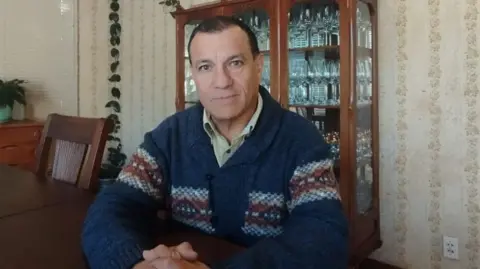
“The population is assigning a change in government almost magical qualities, because they think that with a change of government we’ll return to stability and prosperity,” he says. “And that’s not going to happen.
“Bolivia will only feel the hard impact of the economic crisis with a new government, because it will make structural economic changes, which will be unpopular.”
Mr Rodríguez is adamant that the Bolivian economy needs to be significantly altered. “We need to change the model, because the current model, has too much emphasis on the state,” he says.
“There are two actors, one the state sector and the other the private sector. The driver of development must be the citizen, the entrepreneur, and for that, the state must do what it’s meant to do. In other words, good laws, good regulations, good institutions.”
While polls suggest Bolivia’s next administration is likely to be right-wing, such radical governmental and economic change, to significantly reduce the state’s role, is not expected.
Business
India’s $5 Trillion Economy Push Explained: Why Modi Govt Wants To Merge 12 Banks Into 4 Mega ‘World-Class’ Lending Giants
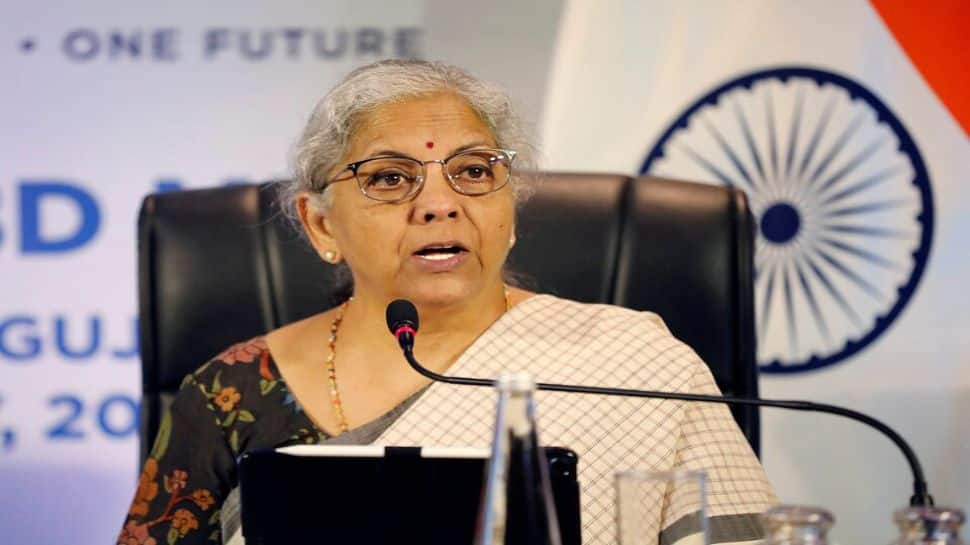
India’s Public Sector Banks Merger: The Centre is mulling over consolidating public-sector banks, and officials involved in the process say the long-term plan could eventually bring down the number of state-owned lenders from 12 to possibly just 4. The goal is to build a banking system that is large enough in scale, has deeper capital strength and is prepared to meet the credit needs of a fast-growing economy.
The minister explained that bigger banks are better equipped to support large-scale lending and long-term projects. “The country’s economy is moving rapidly toward the $5 trillion mark. The government is active in building bigger banks that can meet rising requirements,” she said.
Why India Wants Larger Banks
Sitharaman recently confirmed that the government and the Reserve Bank of India have already begun detailed conversations on another round of mergers. She said the focus is on creating “world-class” banks that can support India’s expanding industries, rising infrastructure investments and overall credit demand.
She clarified that this is not only about merging institutions. The government and RBI are working on strengthening the entire banking ecosystem so that banks grow naturally and operate in a stable environment.
According to her, the core aim is to build stronger, more efficient and globally competitive banks that can help sustain India’s growth momentum.
At present, the country has a total of 12 public sector banks: the State Bank of India (SBI), the Punjab National Bank (PNB), the Bank of Baroda, the Canara Bank, the Union Bank of India, the Bank of India, the Indian Bank, the Central Bank of India, the Indian Overseas Bank (IOB) and the UCO Bank.
What Happens To Employees After Merger?
Whenever bank mergers are discussed, employees become anxious. A merger does not only combine balance sheets; it also brings together different work cultures, internal systems and employee expectations.
In the 1990s and early 2000s, several mergers caused discomfort among staff, including dissatisfaction over new roles, delayed promotions and uncertainty about reporting structures. Some officers who were promoted before mergers found their seniority diluted afterward, which created further frustration.
The finance minister addressed the concerns, saying that the government and the RBI are working together on the merger plan. She stressed that earlier rounds of consolidation had been successful. She added that the country now needs large, global-quality banks “where every customer issue can be resolved”. The focus, she said, is firmly on building world-class institutions.
‘No Layoffs, No Branch Closures’
She made one point unambiguous: no employee will lose their job due to the upcoming merger phase. She said that mergers are part of a natural process of strengthening banks, and this will not affect job security.
She also assured that no branches will be closed and no bank will be shut down as part of the consolidation exercise.
India last carried out a major consolidation drive in 2019-20, reducing the number of public-sector banks from 21 to 12. That round improved the financial health of many lenders.
With the government preparing for the next phase, the goal is clear. India wants large and reliable banks that can support a rapidly growing economy and meet the needs of a country expanding faster than ever.
Business
Stock market holidays in December: When will NSE, BSE remain closed? Check details – The Times of India

Stock market holidays for December: As November comes to a close and the final month of the year begins, investors will want to know on which days trading sessions will be there and on which days stock markets are closed. are likely keeping a close eye on year-end portfolio adjustments, global cues, and corporate earnings.For this year, the only major, away from normal scheduled market holidays in December is Christmas, observed on Thursday, December 25. On this day, Indian stock markets, including the Bombay Stock Exchange (BSE) and National Stock Exchange (NSE), will remain closed across equity, derivatives, and securities lending and borrowing (SLB) segments. Trading in currency and interest rate derivatives segments will continue as usual.Markets are expected to reopen on Friday, December 26, as investors return to monitor global developments and finalize year-end positioning. Apart from weekends, Christmas is the only scheduled market holiday this month, making December relatively quiet compared with other festive months, with regards to stock markets.The last trading session in November, which was November 28 (next two days being the weekend) ended flat. BSE Sensex slipped 13.71 points, or 0.02 per cent, to settle at 85,706.67, after hitting an intra-day high of 85,969.89 and a low of 85,577.82, a swing of 392.07 points. Meanwhile, the NSE Nifty fell 12.60 points, or 0.05 per cent, to 26,202.95, halting its two-day rally.
Business
North Tyneside GP says debt stress causing mental health issues
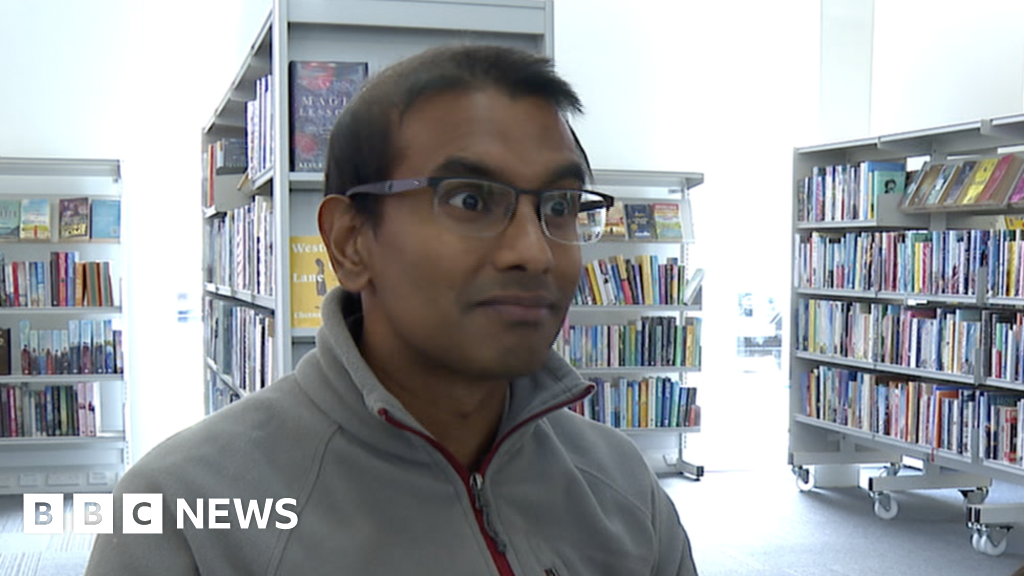
A GP says patients are presenting with mental health problems because of stress they feel over their levels of personal debt.
According to Citizens Advice, north-east England has the second highest number of people who require professional assistance with debt problems – only London is higher.
Debt charity StepChange said in 2024 the highest concentration of their clients were in the North East, with 37 clients per 10,000 adults.
Dr Kamlesh Sreekissoon, who works as a GP in North Tyneside, said people were juggling “three or four jobs” in the build up to Christmas in order to manage and subsequently struggling with their mental health.
The most common reason for personal debt as reported by Stepchange’s North East clients is a rise in the cost of living (19.3%) and a lack of control over finances (19%).
Both these statistics outstrip the UK figures of 17.7% and 17.9% respectively.
Citizens Advice said thousands of people were falling deeper into debt to meet the cost of basic essentials such as food and fuel, rather than luxuries, but that people also felt under pressure to provide for Christmas.
Dr Sreekissoon said the stress caused by the debt people faced was compounded by issues relating to their family situations.
“At this time of year you will see people juggling three or four jobs, also after caring for elderly relatives, parents, [they’re] stressed out and unfortunately struggling with their mental health,” said Dr Sreekissoon.
He said the debt his patients described was not caused by buying unnecessary things, but by simply struggling to make ends meet.
“It’s more the basics,” he said. “I see people taking on working long hours, doing two or three jobs, and just being kind of stretched out, not being able to see their kids, and that just burns people out which is really sad to see”.
-

 Sports7 days ago
Sports7 days agoWATCH: Ronaldo scores spectacular bicycle kick
-

 Entertainment7 days ago
Entertainment7 days agoWelcome to Derry’ episode 5 delivers shocking twist
-

 Politics7 days ago
Politics7 days agoWashington and Kyiv Stress Any Peace Deal Must Fully Respect Ukraine’s Sovereignty
-

 Business7 days ago
Business7 days agoKey economic data and trends that will shape Rachel Reeves’ Budget
-

 Tech5 days ago
Tech5 days agoWake Up—the Best Black Friday Mattress Sales Are Here
-

 Fashion7 days ago
Fashion7 days agoCanada’s Lululemon unveils team Canada kit for Milano Cortina 2026
-

 Tech5 days ago
Tech5 days agoThe Alienware Aurora Gaming Desktop Punches Above Its Weight
-

 Politics7 days ago
Politics7 days ago53,000 Sikhs vote in Ottawa Khalistan Referendum amid Carney-Modi trade talks scrutiny







